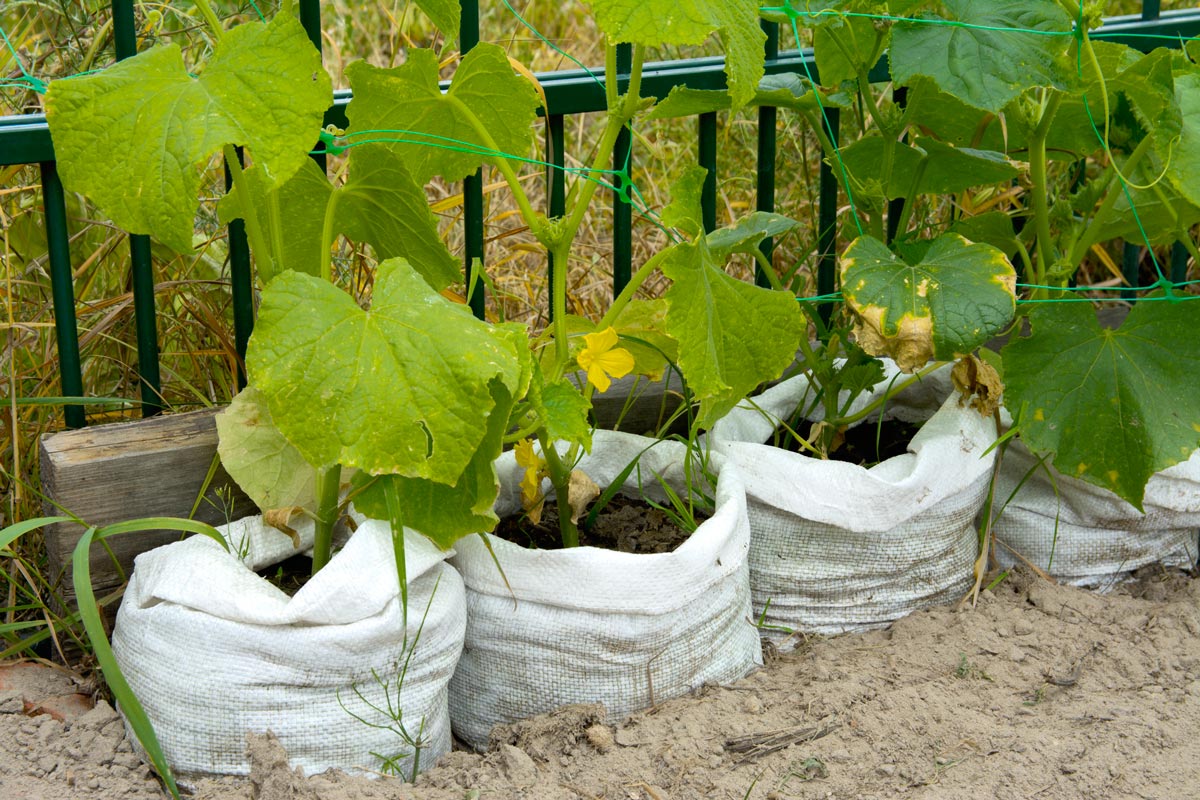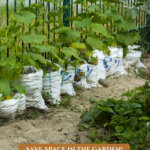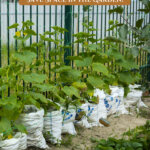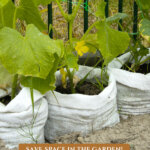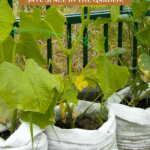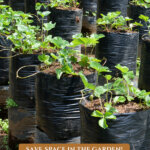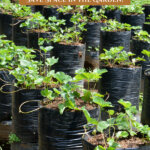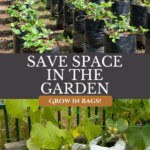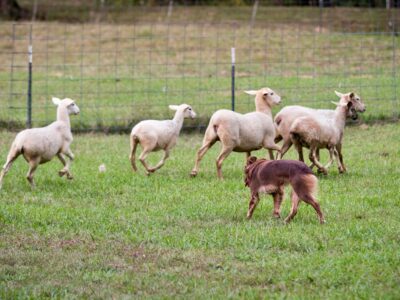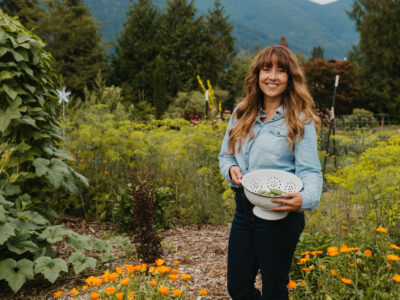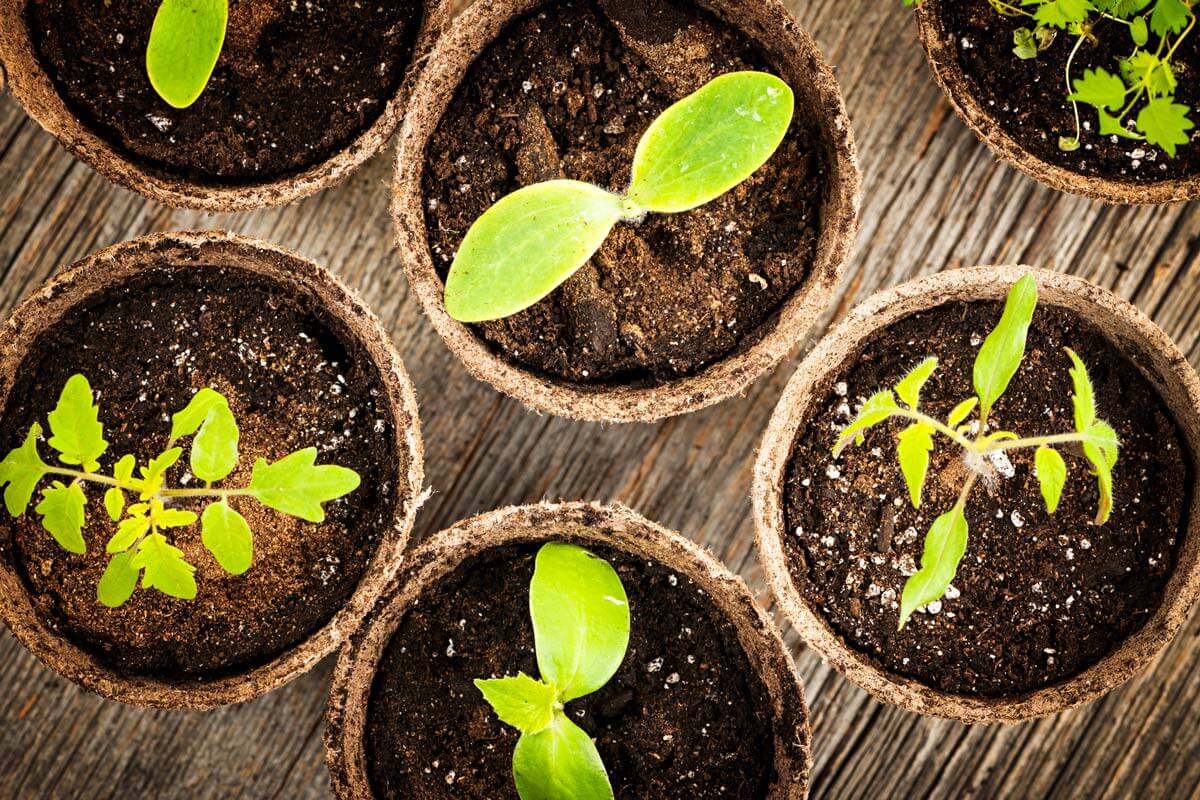One medium of growing vegetables that I've been excited to try is using grow bags in the garden. They're moveable, breathable, and can be stored away in a very small space. Find out all about using grow bags in the garden!
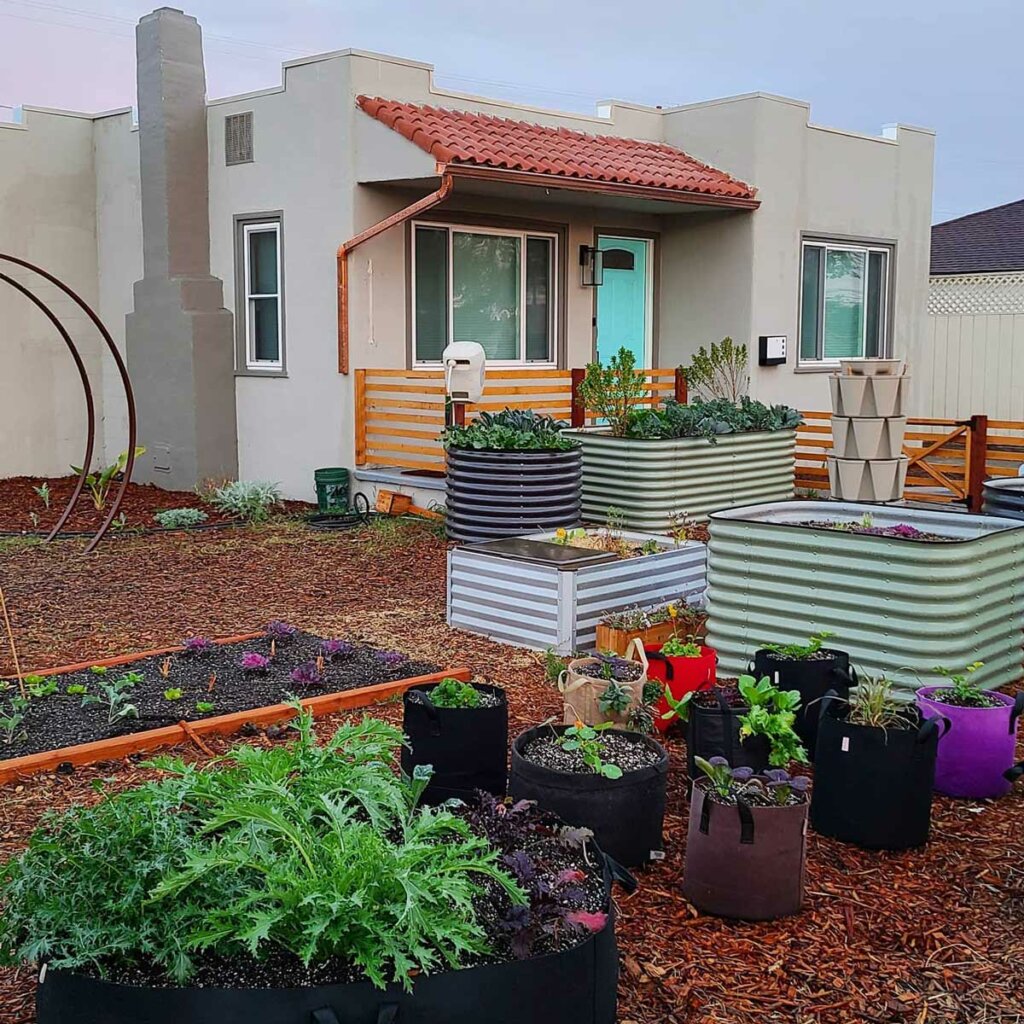
I'm excited to welcome back Kevin Espiritu, from Epic Gardening to the podcast. He's been with us before, sharing his tips on small space vegetable gardening and urban gardening. Today he's back on the Pioneering Today Podcast (episode #311) to talk about grow bags!
Kevin has recently moved to live on 1/3 of an acre and produces a tremendous amount of food (he previously had much less land and still produced a ton of food!), debunking that common gardening myth that you need a lot of land to produce food.
Kevin does this by utilizing many different growing mediums, testing each medium with different crops to see which works best, and then building on that year after year. One of his favorite growing mediums are grow bags.
What is a Grow Bag?
A grow bag, if you've never heard of them before, is just that… a bag that you can grow in! It's comparable to container gardening, however there are some definite benefits of using a grow bag.
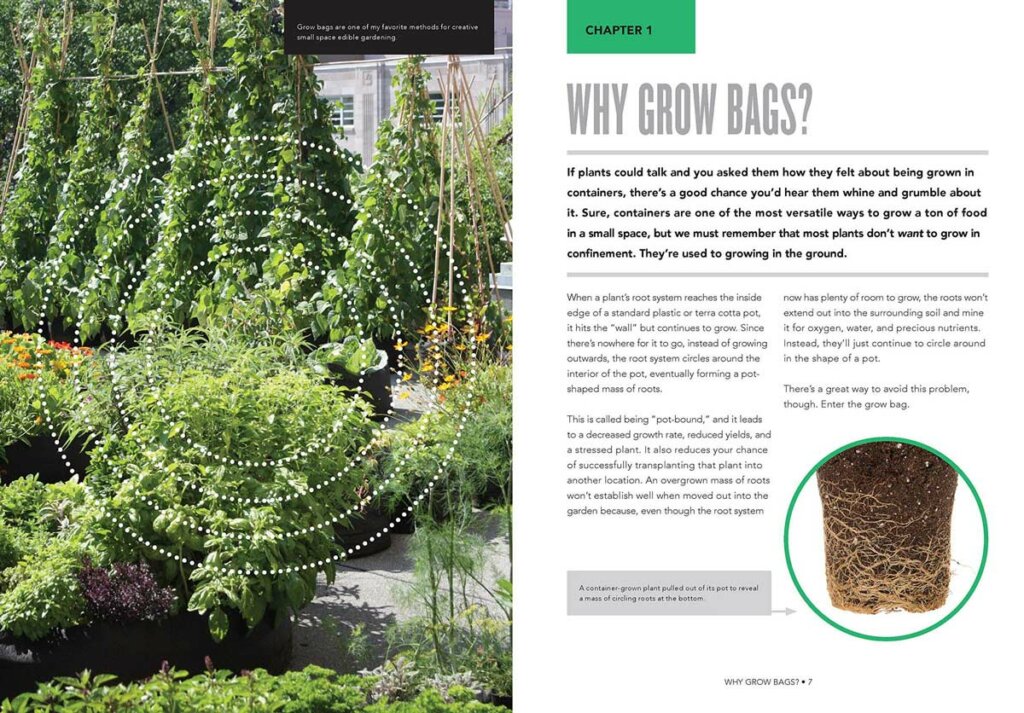
Why Use Grow Bags in the Garden?
Great for Small Spaces & Easy to Move
Grow bags are a great option for small spaces because you can move them around if need be and you're not committed to growing in a specific spot year after year.
If you're limited to a small space, such as an apartment balcony, you can still grow and harvest quite a bit of food using just one small kitchen grow bag (pictured below).
Easier Soil Ammendment
Grow bags allow you to amend the soil within the bag in less time than amending soil in the ground or even a raised bed because you can dump the soil out, mix in your amendments, then fill the bag back up and start your next crop.
I love this time-saving trick so much that I included it in my Time-Saving Tips For New Gardens.
Grow bags are also very helpful if trying to grow multiple crops per year, as both Kevin and I try to do.
Prevent Plants From Getting Root-Bound
The main reason Kevin likes using grow bags (if he's growing in a container and not in the ground) is that the grow bags can help prevent plants from becoming root-bound.
As the root tip grows toward the exterior of the bag, it hits oxygen and there isn't a lot of water available. The roots are essentially pruned as they die back and the plant can focus on growing stronger internal roots. Since the roots die back, they don't continue to grow in on themselves, which is how plants become root-bound.
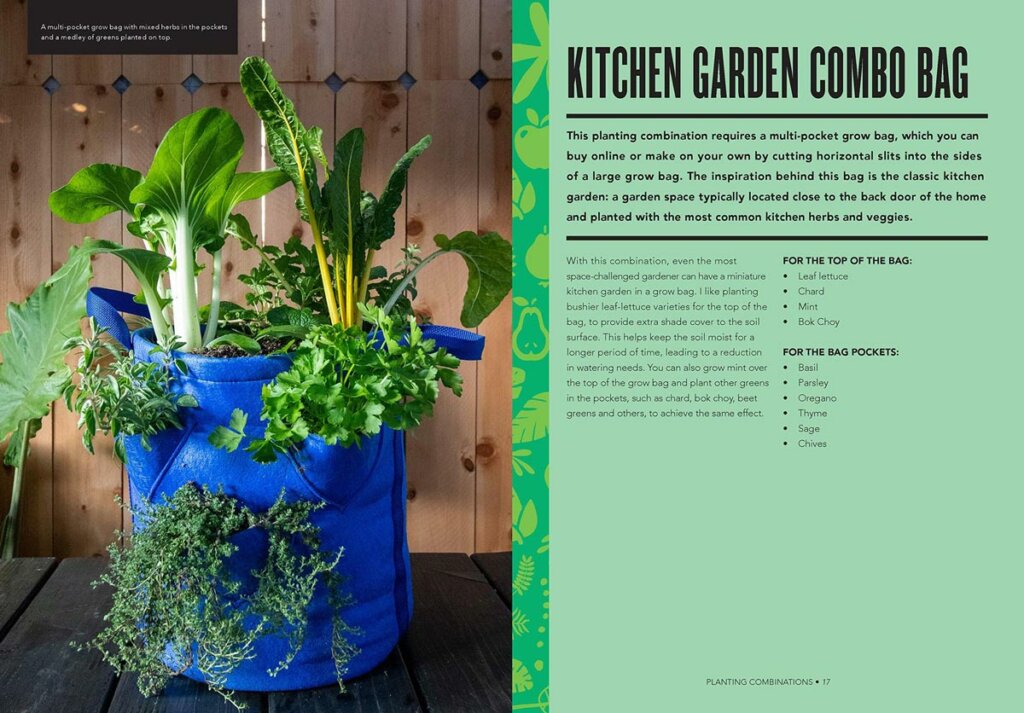
What are Grow Bags Made of?
Grow bags come in all different shapes, sizes and materials, so you'll want to do your homework before going out and purchasing them. The sturdier fabrics such as polypropylene, nylon and canvas will last many more years than using something like cotton, plastic, burlap or other less sturdy materials.
Grow Bag Drawbacks
There is a small tradeoff with using grow bags, but not one that outweighs all the benefits. Because grow bags are exposed to the air on all sides they do tend to dry out and need watering more frequently than plants growing in the ground.
However, you can mitigate this issue a bit by not planting in anything that's smaller than 7 gallons in size. You can also add some Coco Coir to help hold more water, add a dish underneath the bag to help contain some of the water, add a layer of mulch on top to help keep water from evaporating out, etc.
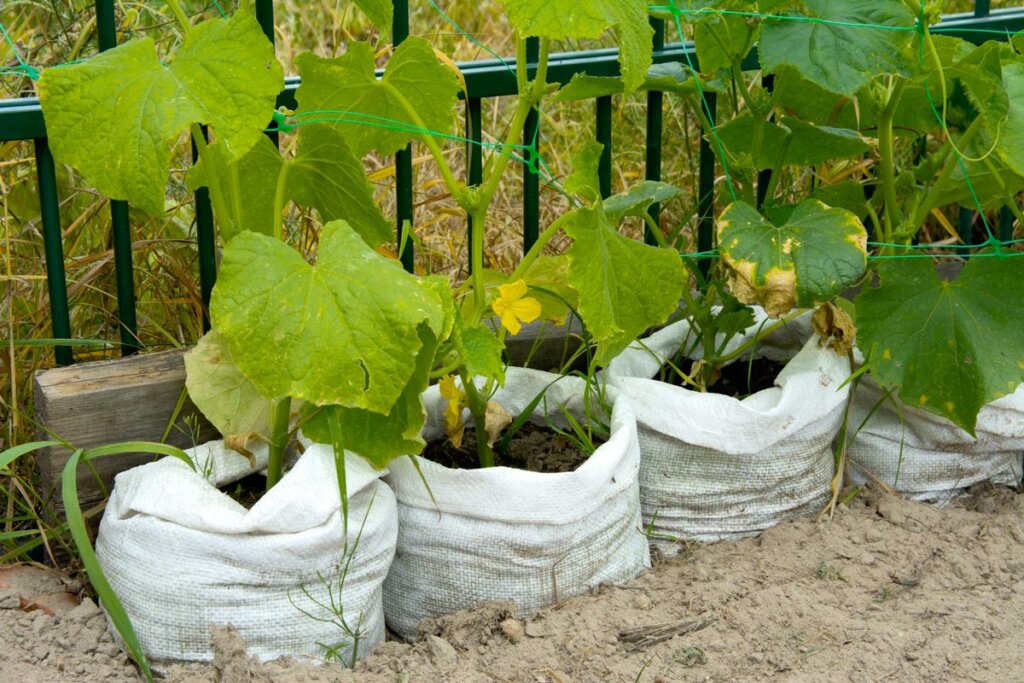
Grow Bag FAQs
Do Grow Bags Need New Soil Every Year?
I asked Kevin whether or not he recommended adding new soil to the grow bags each year, or between plantings, or if you can just reuse the same soil.
He recommends adding amendments, but not dumping the soil after each use. The great thing with grow bags is they're often small enough to lift and dump into a wheelbarrow, add your amendments right into the wheelbarrow, then scoop the soil back into the grow bag to start again.
What is the Best Soil to Use in Grow Bags?
It's not recommended to just grab soil from your garden and scoop it into a grow bag (this isn't recommended for pots either). It's important to use potting soil, or soil that's had amendments added to make the soil rich in organic matter, well-draining, and full of nutrients for the plant.
Kevin recommends using Coco Coir as it's a light organic material that will give your soil more aeration and will help retain moisture.
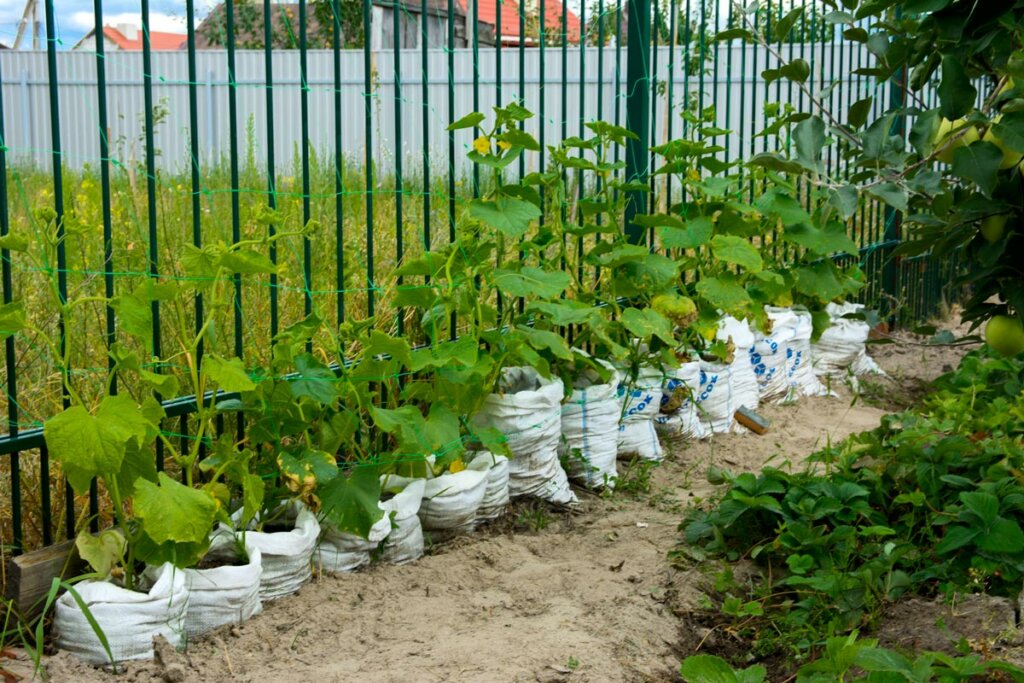
How to Water Your Grow Bags
You can water your grow bags just as you would any potted plant. Kevin recommends, if possible, setting up a self-watering system. He uses drip spikes with adjustable valves so he can increase or decrease the amount of water going to each grow bag.
Where can I Find Coco Coir?
Kevin recommends looking for Coco Coir from your local home and garden store. he also sells them on his online store, or you can even find them on Amazon.
Can You Grow Perennials in Grow Bags?
I wondered whether grow bags would work for larger perennials, crops that come back year after year, or if Kevin recommended only growing annual crops in the grow bags.
He mentioned that he has over-wintered some crops in his grow bags, as well as growing fruit trees successfully. What he does is ammend the soil for the length of the growth of the plant. Once the plant is dormant, he might size up the bag, or supplement with more compost in the soil, etc. But it's important to do this during the plants dormancy, and not it's growing cycle.
He also recommended, if growing perennials in grow bags, to choose a larger-sized grow bag to start.
Using Grow Bags for Invasive Perennials
Grow bags are fantastic to use for those perennials that can be invasive, such as mint, oregano, etc. This allows you to grow your favorite herbs without them taking over your entire garden.
Kevin also grows fruit trees and anything else that you can over-winter. Bottom line, Kevin says, “If you can grow it in the ground, you can grow it in a grow bag!”
Can You Grow Root Crops in a Grow Bag?
Many people don't think you can grow root crops in a grow bag, but Kevin says, as long as the bag is the correct size for the crop you're growing, you'll have no problem!
Carrots have been the root crop that Kevin has had the most trouble with, mostly because grow bags can be harder to keep the top layer of soil moist for proper seed germination. But with a little extra care during the germination cycle, you should have no problems.
All other root crops (beets, turnips, radishes, etc.) have a large enough seed size that Kevin hasn't had issues with them germinating. Once the crops have germinated, there's really no difference growing in a bag than in the ground.
Using Grow Bags for Potatoes
If you want to grow potatoes in your grow bags, for every 5 gallons of your bag you can add one more potato. Each potato generally produces about 8 potatoes. You can certainly plant them more densely, but you'll just end up with smaller potatoes (or new potatoes), so if this is your goal, then plant more densely.
Be sure to check out my guide on how to plant and grow potatoes (the method is the same for in the ground or in grow bags!).
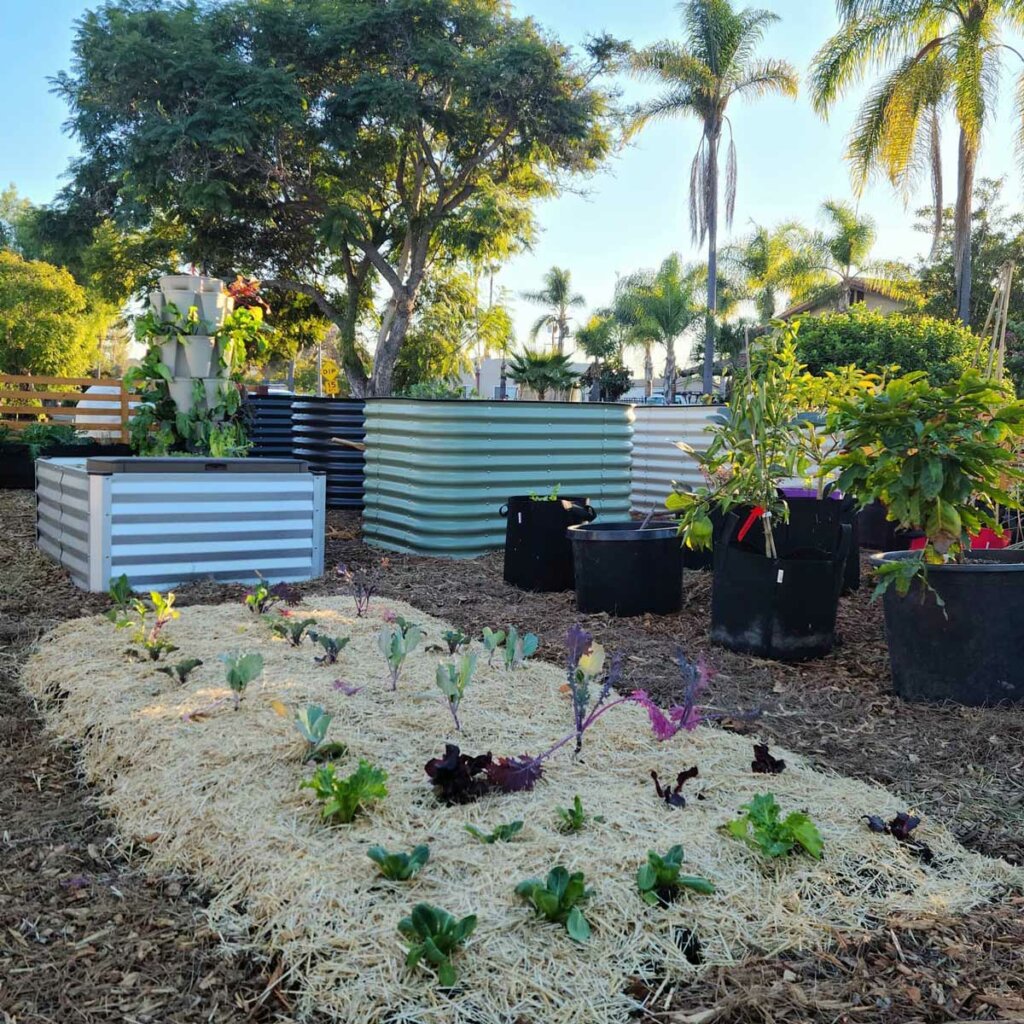
What Grow Bags Does Kevin Recommend?
Though he doesn't have a particular brand or material he uses, he does recommend getting the right size grow bag for the job.
Just because you can buy 100 gallon grow bags, he doesn't necessarily recommend getting this size because they're extremely hard to move, especially when filled with water.
Though if you have need for the larger sized grow bags, be sure to have a way to move them. Kevin uses a dolly and that works very well.
Grow bags also come with handles on the sides, so if you have a couple strong-armed friends, moving them isn't too difficult.
Moving the larger grow bags can have its drawbacks. The soil can crack and you can disturb the plant, especially if you're growing trees or more well-established plants.
How Long do Grow Bags Last?
If you get a good quality bag, they can last about 5 years, especially if you take care of them.
Reusing Grow Bags
When your crop is done growing, simply harvest, pull the crops out, dump the grow bag soil into a wheelbarrow, add compost or other amendments back into the soil, then fill the bag up and plant!
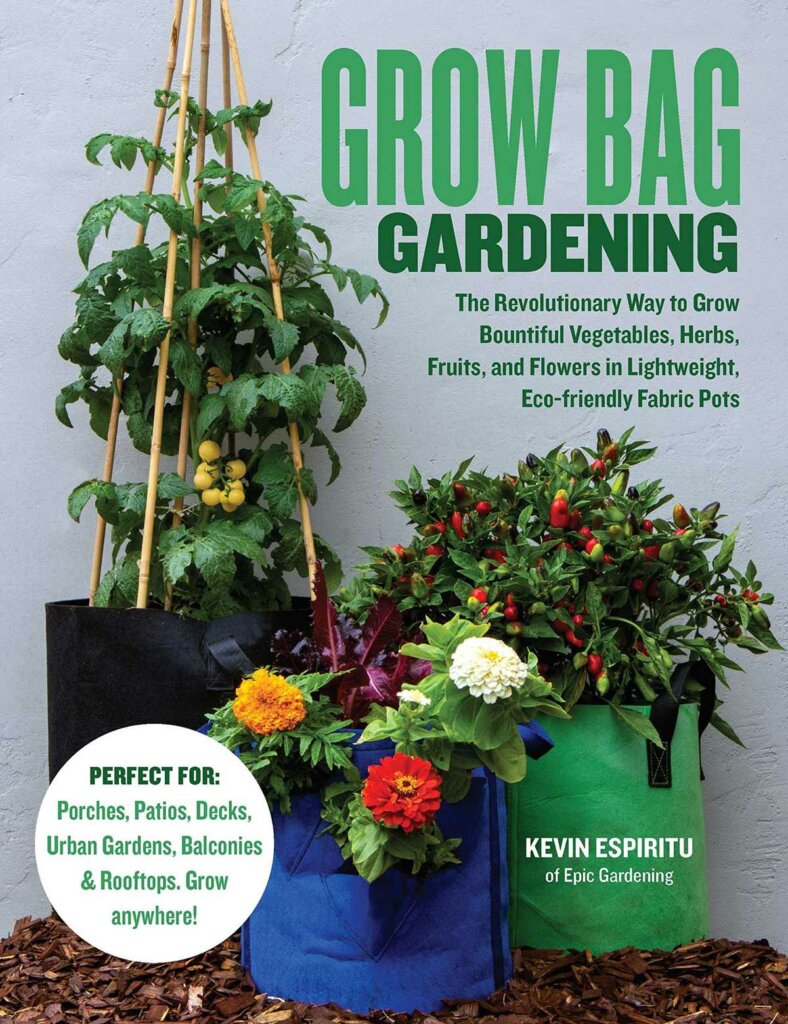
Where to Find Kevin
You can check out Kevin's website, Epic Gardening for more gardening tips. If you want to find out more about using grow bags in the garden, grab Kevin's book, Grow Bag Gardening!
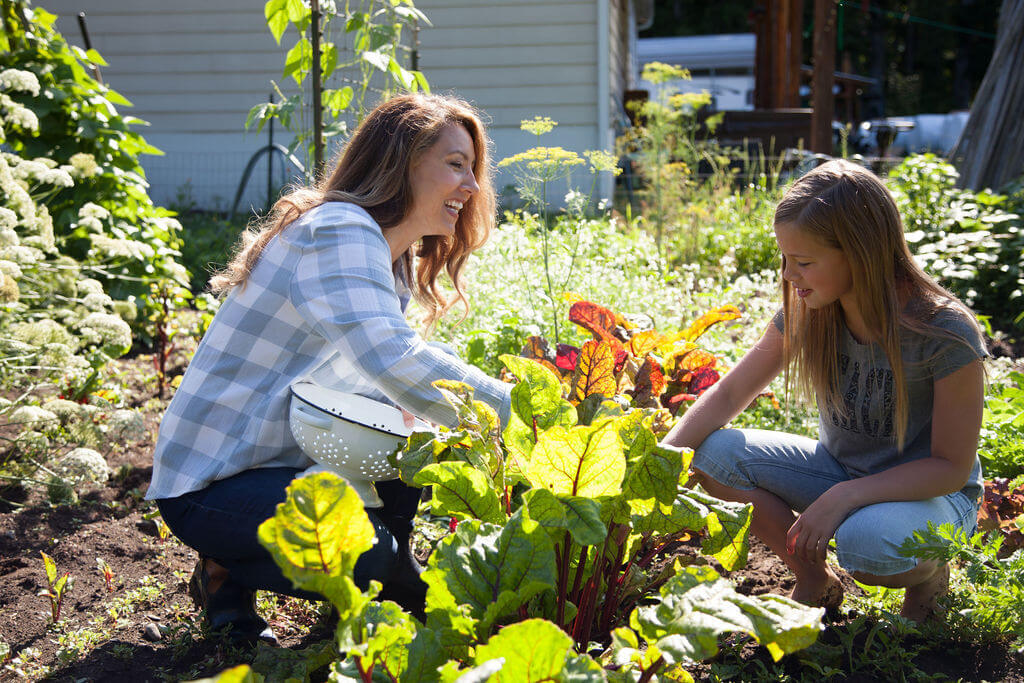
Melissa
Hey pioneers. Welcome to episode number 311 on today's episode, we're going to be talking about the advantage to using grow bags. Now, even if you are an in-ground Gardner or you have raised beds or use other containers, you're definitely going to want to stay tuned for this episode because grope bags offer some unique benefits that you're not going to find with really other, any container type growing medium and our goal. I'm sure if you've listened to the podcast for any amount of time, you are familiar with this, but our role is to grow as much food as possible on our homestead. And that often I should say almost always is going to mean using different types of growing mediums and grow bags are something that you definitely want to consider. Even
Melissa
If you have more space and do in-ground gardening, like we do. Today's guest, you are probably very familiar with, he has been on before, and that is Kevin spear too, who is an urban gardener. He's the founder of epic gardening. So there's the effort gardening podcast. He's got a really large YouTube channel and Instagram, and he has a gardening education company and it's their mission to teach over 10 million people how to grow their own food, no matter where they live. Can you see why we get along so well? And he started gardening in a condo in 2011, where he was just setting up a hydroponic systems and growing herbs and veggies. And since then, he's expanded into pretty much every type of gardening imaginable. And he even lived off of his own food for a month in June of 2019. Now I know if you're more doing large scale home setting, or if you have livestock and already been growing the big garden, then you're like, oh, we, you know, we do that.
Melissa
But if you are living in an area in an urban environment, that's actually a lot more difficult to do. So it was a really cool experiment. He documented the whole thing. And I really enjoyed watching him go through that and seeing what that was like for all of the different links that we are talking about today and resources, there will be a full blog post that you can go and check that [email protected] forward slash 3 1, 1 or 311. Right? But just the number. So mosquitoes.com/ 3 1 1, because this is episode number 311. If you've not met Kevin, yet you are going to enjoy him. And all of his gardening contact it. Really his enthusiasm for gardening is really, really fun to watch. So without further ado, we are going to get straight to today's episode. Welcome back to the pioneering today, podcast, Kevin Berry, excited to have you today.
Kevin Berry
Hey, thanks. Great.
Melissa
Yeah. So one of the things that I have found so fascinating in watching your garden and your journey evolve with producing food, and that is one is I don't think that we could probably be further apart in our growing Sones, uh, but also to see how much you have been able to grow in a relatively small space. Now I know you just upgraded. I, I get that sounds like a funny word to say, but you've moved to a spot recently that does have some more yard space, so you've been able to increase. Um, but in comparison to our acreage on the homestead, you have been able to produce a lot of food in a pretty small growing space overall.
Kevin Berry
Yeah. Yeah. I have. I mean, I, I forgot how much acreage you're working with. Most, I suspect it's probably still much more than my upgrade, but, uh, yeah, it's been a fun challenge to try to kind of expand because for me, I mean, I basically had, I dunno, 15 by 30 feet up until sometime last year and now I've got a third of an acre.
Melissa
Yeah, we have, well, we have 15 acres, quite a bit of that as pasture for livestock, but yeah, I mean, so a third of an acre is a great yard space. And, but even that you have really, because I've been following, I follow you on Instagram and see your different YouTube videos and stuff. And so you've really utilized it well, and what's fun to see is you use a lot of different, you're kind of, I feel this in common. I like to test in the garden and you, and I noticed that you do that too. You don't pick just one growing medium or one way to grow specific things. You do a lot of testing and trying different things out. And I really love that because I like to do that too. And one of the things that you use that I have not used yet though, is B-roll backs.
Kevin Berry
Yeah. I'm huge on using the grow bags, those big on them, especially at the old space, because just the ability to kind of move them around and slot them into different spots. But they become my preferred container if I'm growing in a container,
Melissa
Okay, now I love this. So with container gardening, I've done container gardening and like half whiskey barrels and five gallon buckets. And they didn't even sound like basal and much smaller pots, et cetera. Um, but for container gardening, why is the grow bag now your favorite?
Kevin Berry
So the main reason, the principle reason is just the way that the material works compared to, I don't know, a plastic pot for sure. A terracotta a little bit less. So it's still still working terracotta. And the, the thing you're working with rollbacks is it's a quite a porous material. And so when you've got your soil in there, and let's say you've got a tomato in there by the time that tomato roots actually expand out and hit the edge of, let's say a plastic pot, they're going to wrap around pots, it's broke down, right? We all know what that is when you're growing in a container and it's an announcement, wait for the plants to grow. And it's just not optimal. The plant doesn't want to grow that way. If you were to have it in soil, you'd have a much more natural looking roof structure with grow bags.
Kevin Berry
It's not like it cures that problem completely, but it does help quite a bit because what you have happened is you have the root tips ended up hitting the edge of the pod, just like they would have any pot, but there's not a ton of water at the edge. There there's a lot of oxygen air. So it actually dries out and kills the root tip, which sounds bad. But what ends up happening is that effectively prunes that root tip and stops it from wrapping around and the plants going to stimulate and grow a little bit more root structure out in the center of the roots. So you get a much more fibrous and well distributed root structure, which ends up meaning you have a healthier plant.
Melissa
Okay. I find that very fascinating because actually back in the day, because we deal with blight here so bad in the Pacific Northwest, just so much moisture coming down with tomatoes, even in the summer months, I never had much success with tomatoes. And so I tried growing them in plastic five gallon buckets so that I could put them underneath the overhang of our house in different areas. So they wouldn't get as much rain. So this was before we settled on growing them in the high tunnel. But I honestly, I never had success with growing tomatoes in five gallon buckets. And my suspicion is, is because of exactly what you're talking about, especially with tomatoes, having such an expansive root system, or they like to, in order to perform well, it probably just reached the edge of the bucket and then it just, it became root bound. And I never got a very large tomato harvest at all off of those tomatoes.
Kevin Berry
Yeah. Yeah. I mean, that could, that could definitely be a factor. I just know for me, when I was going to small spaces, I wanted to have something that I could hold up. If I didn't need to use it, I could move it around. I was growing potatoes in them. I think we've talked about potatoes here on the podcast before, uh, both big fans and, you know, with potatoes, you don't really need them in the sun until they start crowding out so I could pop them around. And I just wanted to contain it. I didn't have to worry about the only real downside to containers as I saw, which was the way that roots will typically grow and sort of choke themselves out.
Melissa
Okay. So with the grow bags, having that more poorest material, and then we get the benefit of the root pruning, as you have told us, because they're hitting the air. But one of the things that you said, which kind of caught my attention when you're talking and the reason for that is because I've been having to water. Cause we're actually warm here right now. And I do still have some things. I do have certain things in containers, which means when we get warm, I'm having to water my container plants. Whereas the stuff that's in ground, I'm not having to water yet. So with the grow bags, how is the watering situation with them? Because it is porous. Does the soil dry out faster?
Kevin Berry
Yeah, for sure it does. Um, so the way that I've at that as like that's a small trade off to make that air printing benefit, but there's a lot of stuff you can do to mitigate that. So the first thing I tend to do is I don't really growing smaller bags. Like I don't even grow in a five gallon bag. I go seven gallons or more. Sometimes you can just modulator your, your soil makes a little bit like maybe add a little more coconut corn or something like that to hold more water. I think something that a lot of people don't do, Melissa, which I'm unsure, why is we mulch maybe on our in ground plan teams or our raised beds. We don't hold our containers, silviculture containers. That helps quite a bit. And then you can, you can set it up on your vacation. You can throw a saucer at the bottom and fill that up with water as sort of like a nice little buffer. There's a lot of things you can do to mitigate the fact that typically in grow bags, if it's porous around all sides, it's almost like the whole thing is the bomb. Right. And so the whole thing is the top. And so yeah, water is going to fall out of that. That makes a little bit faster.
Melissa
Okay. And you're right. I don't know what the mulching think. That's very interesting that you bring that point up because typically we don't mulch the containers, but you're right. At least for that top surface level, it's going to help. And now I have a question for the GrubHub. So I know you said, sorry, I'm kind of squirreling here cause I'm jumping, but in larger containers, cause you're saying you're doing the larger grow bags. So for me, I'd like my half whiskey bottle containers, which is what I have my perennials for the most part planted in, but I don't, you know, they're pretty old, so obviously I'm not emptying the soil out. And so I keep the same soil in, but then I pop dress that soil with compost. Um, and then sometimes we'll put straw or just whatever medium I have mulching on top of those. Um, or pine needles, different things like that. Cause we have a lot of evergreen trees here, but with the grow bags, can you grow perennials in them? And would you just leave the same soil in there and then just amend and add to it for a few seasons or with, because I've just not used the grow bags in that manner, but I'm intrigued using them with perennials. But I was kind of curious as we're talking about soil, how do you handle that with them?
Kevin Berry
Yeah. So I have, I guess I'm growing perennials in a non-technical sense. So like I've got, uh, peppers that I go over wizard and so, you know, they can be perennial eyes and all I've really done with the peppers at least. And I think this would probably apply to most other brand deals you might grow like maybe artichokes or something along those lines is I will typically just amend that soil for the length of the growth. Sometimes that will, with one of my peppers, I had a black over pepper that I uh overwintered and so I've grown it down to about a third of its original size and then it goes dormant during the winter time. So you can move it around and do what you want. And so I ended up sizing up the bag and shoring that up with a little bit more mixed.
Kevin Berry
And so that was a way to, you know, hopefully have it grow a little bit larger next year, but also give a little bit of accurate efficient without having to completely redo everything. So that may be what I do. I think if I was growing up in a grow bag, I would just opt for a larger size bag in general. Do you have a little bit more to work with? And it's not as you know, it's just not as finicky with the drying out and with maybe running out of nutrients too soon, all that kind of stuff.
Melissa
Okay. Very good. And gosh, we, you said that growing peppers is a pretty old I'm like, yup. I was completely right when I said we couldn't have further growing zones apart. So I am, that is so intriguing to me. So with the peppers as a perennial, how many seasons or years, or how long is it's typical growth span? Like how long could you keep the same one going and producing?
Kevin Berry
I don't know the actual answer. I know that I have gone at least three years. I know people who've gone five, six, so, so you, you certainly can do it for quite some time. I mean, they're going to start getting pretty large and thick and Woody and I'm not quite sure on how the production goes, but I think for me, like one thing I did this year, Melissa, with my new space, right. I have a lot more space. Is I planted 43 peppers. I don't think it's all different varieties. I think I have about 35 different varieties and I've grown none, almost none of those varieties before. So I wanted to do this year is say, okay, they're in the ground. They could have been in grow bags. That part doesn't really matter for this, this point. I'm going to see how they all do.
Kevin Berry
I'm going to see which ones I like, which ones didn't have disease or pest or anything like that. And then I'll just, overwinter the ones that I like. So that next year I have those a little bit earlier and they're just more established. And then I can have almost like a multi-year cycle of rotating peppers around the garden. But I think that to me, that just seems like a really smart move because then you don't have to wait forever for the pepper to germinate and size up if you know you like it from last year.
Melissa
Yeah. No, I think that's a great idea. And it's what you could obviously seed safe from them though. That's kind of not what you're talking about, but that really is a, is a principle of seed saving as well is picking the plants that obviously you like, but that have those characteristics they're diseased free. They are prolific, they are producing large, really good fruits and then pruning out and getting rid of the other words. So over time, your garden is evolving into a stronger, more robust plant life without you having to do as much work, which I really love that. I love that aspect about seed saving, but you could do it just like you said, with the peppers and the perennials too. So I'm finding that amazing. You know, what's funny is so I can't, overwinter warm weather plants here, but I actually with broccoli, this is the first year that I've experienced this and I'm planning on trying more of it this following year for kind of the same reasons you're talking about.
Melissa
But I had planted some broccoli starts in the fall actually in the summer, but they weren't of size. Once we hit the cold weather and the daylight hours got really short, so it never produced a head. So I have notes that, uh, now this summer I need to plant them a little bit earlier, but what was fascinating is I left one of the broccoli plants in, even after it didn't produce a head and the other ones I had taken out to put in spring crops, it is right now, it's actually producing a lovely broccoli head for me, even though I technically planted that broccoli sprout at the end of last July. And at the time of this recording, it's at the beginning of June. So I'm like, oh, so I'm almost thinking of like stagger planting some of those broccoli, um, so that I get some in the fall, but then I have some that will produce those heads come spring time.
Kevin Berry
That's really interesting. I know every time we talk, it's like I have my warm weather joys and you have some of your older product-wise, it's so interesting because we're so opposite that that's something I never would've thought of. I mean, I struggle honestly, just to grow any heading brass successfully in the first place, mean my timing has to be perfect because if I, if I miss time in the cabbage, moms are just going to eat everything no matter what I do. And so I have to kind of a tiny against where they're able to grow or where they're, where they're, you know, really large in population otherwise I'm totally done for
Melissa
It. Yeah. It is very fascinating just with the differences in the weather, like what you experienced as a gardener. But I also think it's really cool because even though yours is with warm weather and mine is with cold weather, we are able to do some of very similar like testing and stuff doing, but it's just knowing your climate and working within it. So I think that's, it's actually really fascinating. Um, but back to grow back, sorry, I knew I was gonna go off on a rabbit trail there. Um, but with the grow bags, so you had mentioned quite a bit about moving them. And I know with a lot of the larger containers that I work with once those babies are filled with soil, some of them are kind of impossible to move, but as we were just talking about like knowing your microphones and your microclimates and how you would take the pepper plant and you know, over winter, it, uh, you know, kind of moving it to a more sheltered location, et cetera, um, are with the grow bags. Do you have advice as far as size or, you know, moving them and picking them and how well move, like any tips on when you do go to move them that you should be aware of?
Kevin Berry
Yeah, well, like I said, I think I would, I would size my bags up typically. So I would start at around seven gallons for almost anything I would want to grow. And I, I mean, I have an a hundred young girl bag, actually. That's pretty hard to move. Like you said, the a hundred gallon ones, these big, big ones typically will come with handles that one actually has four handles, even then. It's hard to move if it's full of water. So then you have to think about, okay, well maybe I'll get some help and I'll move it when it's, when it's drier and then I'll water it in when I get it to its final resting place. So I would offer back to with handles for sure. Um, you can get reinforced bags from a couple different companies. Another thing that I've done is I've moved them with like a hand truck or I've built like little dollies, especially when I'm growing, you know, a fruit tree and I grow back or something like that.
Kevin Berry
Those you're starting at 15 gallons, 20 twenty-five gallons. It's going to be difficult to move no matter what. And you kind of don't want to mess around with, you know, cracking the soil and damaging the roots of the tree and all that. So I've just put a lot of those on these little dollies that you can build out a caster wheels at a, any sort of big box store. And just some one by three or a two by four lumber or whatever you've got lying around. I know lumber is kind of expensive right now, but that's what I've been doing. Um, and as, as far as placement itself, like you said, I mean, you want to think about what you're, what you're planting and what conditions it likes just as if it was in your normal garden. And the cool part about the growing is you can kind of adopt them around your landscape. So, you know, for me, I've got some stuff in the backyard that really only wants like half sun, especially as we move into summer, maybe like some lingering greens or some lingering spring crops, like BP's or something like that. And so for those, I can just kind of slot them under this little tree and just pop them there. And whenever I'm done, I'll just, I'll just move them, refresh that, plant something else, put it out in the sun, grow a summer crop.
Melissa
Okay. So the versatility there is really awesome. Um, but I wanted to bop back. I just realized that we got talking about, about bolts. We got the soil and we had mentioned ways to help by adding some stuff into the soil in order to increase the amount of water because they can dry out. But when, I mean, usually people I always recommend anyways, is that you don't just take garden soil or soil that's in the ground and pop it in a container because of metric pressure and other issues that you actually have a true like container potting soil formula. I'm assuming that's the case for grow bags, but is there anything additional that you need to be aware of when, when you're putting soil into a grow bag versus just any other type of container?
Kevin Berry
I like to skew a little higher, like I mentioned on some sort of water retaining element. Okay. So these days I do, I just have breaks of coconut four in my garden shed. And when I'm making your grow bag makes, I might even take her mix from a bat and then I just might mix it a little bit more coconut core before I actually fill up the bag. It seems to help, you know, it just, it really does seem to help a little bit. Um, there, there are some other things that you can do or they don't really have anything to do with the soil though. So like, you know, just putting a drip spike in there has been really nice. My personal need this place, Melissa, all I really had was grow bags. So I created like a five-by-five grow back gardens and twenty-five different grow bags.
Kevin Berry
And then ran irrigation down that pulled out and I used what's called an adjustable 360 degree spike. So the spike will help it stick in the actual bag. Cause you got to pull it from your main line into the bag. And then the adjustable was nice because of course different size bags, different plants, right. Different water requirements. And so you can turn the top of that spike and it'll put out a little water a little more and then a lot of water. So I kind of created this little custom irrigation system for not that much money, but as far as soil. Yeah. I mean the only thing I would really say is mashed to the plant that you're trying to grow. And then maybe you bump up with some coconut or whatever else that you'd like to use the ultra water.
Melissa
Okay. Now, where do you, do you have like a special source that you get the, your coconut core from? Or just grab it like in a garden supply center? Area's going to have that or
Kevin Berry
Yeah. I mean these days, I think they shared, do you see it at your local nurseries a lot or no,
Melissa
You know, honestly I've never looked at look to purchase it individually. Cause I do do so much in ground gardening, honestly. Um, and so when I'm putting in like a new container and a lot of my containers have had, it's been like bagged potting soil mixes that I've bought from years back and I've just continued to add compost and it was stuff to it. Um, I really haven't searched, which is why I'm asking. Cause I'm like, if somebody asks you to be like, oh, I don't know, I'm not actually look. So I thought I just would ask you why I had you here. So you're
Kevin Berry
Right. You're right. So I mean the whole thing about coconut cores, you can't find it locally because you can compress it. It's a lot more economical to buy ship than almost any other thing. Because even if something that keep us, there's other reasons you may not want to use the Moss, but if you're using Piedmontese and over online, you have to order like a big bale with coconut where you can get these little breaks. I actually have them on my store, but you can get them from Amazon or wherever. It doesn't really matter. As long as the quality of it is good and yeah, it rehydrates really nicely. And then, you know, you can have fresh in your shed or in your garage and rehydrated, it should be good for quite a few backs.
Melissa
Okay, awesome. Um, now one of the things about the grow bags, cause when I was reading through your book and, and looking at the grow bags and thinking about implementing them and using them perhaps in our homestead, because I do have so much in ground garden space, but what really caught my eye is with perennials and especially perennials, that can be somewhat invasive. Um, like I was even thinking like a lot of in the earth Bailey like mint and that, and cause there's some different varieties of mint that I would like to bring on that I don't actually currently grow, but I'm like I have no more space in my perennial beds and I'm not going to plant it in with my annual beds. Cause I know it will just take over the entire area. So I was very intrigued by the thought of using grow bags for the perennials. And for me it's more the containment aspect of them, um, honestly than anything else. So I know you said that you're using them like with your peppers and stuff. Um, but any other words of wisdom with using them with the perennials? I think you said you had some of your fruit trees in them too.
Kevin Berry
Yes. Some fruit trees. What else do I have? I mean, I guess anything that [inaudible] technically you could over winter, so eggplants actually are good candidate. Um, you could do tomatoes if you really stretched it and protected it, but I know like that's not really the spirit of your question. You're kind of talking to more of a classic perennial. Yeah. I don't do a ton of it. I think you could certainly, I would maybe look at artichokes. I have those in grounds. Um, much like most people grow them, but a friend of mine grew, I don't know, maybe 20, 25 artichokes in 10 or 15 gallon roll bags. And he had those for two years. Those were completely fine. Um, another cool idea might be a perennial pollinator style plant. Right. Um, or maybe you can do herbs, something like that. I'm not super caught up on like maybe ornamental style perennials that you might, you might have her for many, many years, but you really, I mean, if you can grow in a container, you can grow into grow bag. So there's a way to make it happen.
Melissa
Okay. Now it is porous material. And so speaking about this specifically to perennials, especially really long-lived perennials, what's the life cycle of a bag? Like how long is it going to last, especially if it has dirt in it, you know, 24 months or 24 months out of the year. Yeah. Melissa can do math 12 months is what I was going for. Sometimes it feels like we packed 24 months to a year here. But um, anyways, but, but kind of what is the longevity or what's the life cycle or the life span I should say of a grow bag typically.
Kevin Berry
So I've got all the bags I I've ever purchased still. Uh, that's going on like maybe three or four years now. Now that's of course a pocket lasts much longer than that. A plastic pot might last longer. Then again, it might start breaking down in UV if you're dealing with terracottas I'm probably breaking 10% of my terracottas just from living. I don't, I don't know how it happens. It just happens. But with grow bags, I would say, as long as you take care of them, well you're probably get at least five years out of them. It really depends on again, the quality there's ones that are reinforced there's ones that are made with different types of materials. Um, so I would say somewhere in the five-year range, especially if you take care of them. Okay.
Melissa
Yeah. Terracotta like terracotta is beautiful, but I have to be honest living where we live, if they get moisture in them and then freeze, especially if we had like an early freeze or a late freeze that you're not expecting, they just break and crack and then I'm a klutz, I guess. And I end up breaking and cracking them even without the freezing factor. So I don't, I will use terracotta indoors, but I don't, I don't use it outside, honestly. Um, so when you were saying was like, yes, terracotta is gorgeous, but I have issues with it too. So, um, so when you were saying the different, um, like reinforced gopher reinforced grow bags, look for ones with handles, reinforced handles, especially if you think you're going to want to be moving them, but you mentioned different materials. So if you are looking for a grow bag to use many, many seasons, but also especially with the perennial in a more long-lived perennial, um, is there a certain material that you really should be looking?
Kevin Berry
Yeah, it's, it's interesting because there'll be called like a fabric pot, but it's not made typically out of a traditional fabric. So it might be a recycled plastic. It might be more, a more sturdy type of plastic or it might be sort of like a selfish type of material. So I'd say to go with something that feels more along the lines of the belts, you're probably going to get a little less mileage out of it. Then again, those do tend to be less expensive. So if budgets are concerned and maybe that's the one you go with, I would say, if you're going for perennials, you probably want to go with the more rigid ones. I know gardener supply company has these ones called reinforced grow bags. So those are a little bit easier to stand up on their own. So those spot ones can be a little floppy, but also they have this sort of exterior shell still has the air printing benefits, but it just stands out to the elements a lot more.
Kevin Berry
So those can be good. Um, you can't really go wrong. In my opinion, with ones from smart pots, they're really the original creator of the grow bag itself. So they popularized it. They're made in the USA a really good company that I would trust. There's a new one that I've been testing out to be determined on, on how much I like it, but it isn't different material. It's more of a harder plastic mesh type of thing. And that's where brain science grow bags, interesting company name, I'm growing potatoes. And then this year we'll see how that goes. I have a feeling they're a little more porous. You can actually see through it. So it's really like a true screen or mash, you know, like a woven fabric. I have a feeling that will hold up for quite some time because the actual fibers are much thicker, but I'm not sure yet because again, it's my first season growing in them. That's just my, my gut feeling on that.
Melissa
Okay. Gotcha. And guys we'll have, I know Kevin mentioned quite a few names there and if you're like me, you're listening to podcasts when you're on the go and you're like, oh man, I didn't get a chance to write that down. So we'll have on the show notes with the blog post, we'll make sure that we link to all of those so that you can go, go and check those out in further detail if you so want. Um, but with the grow bags, oh gosh, I don't know where I was going with that. No worries.
Melissa
Oh, that's good. Um, I ha oh, it was the potatoes. I knew it'd come back to me just a second there. Um, one with the last one that you mentioned, as long as the potatoes went to the outside, but with our potatoes, we don't really want them to get light. I should say the tubers once they begin to produce it, the potatoes themselves, uh, we don't want that part ticket light until we're ready to pull them out of the dirt and they get them cured for long-term storage, if that's what we're doing. Um, but growing potatoes in grow bags, I've actually had quite a few members in my academy who were limited on space, or weren't able to go down deep into the ground to do trenches or in wanting to grow potatoes, uh, and wanted to use, uh, grow bags to do that. And I have not grown potatoes in grow bags. I've only done in ground, but I also wanted to ask about sweet potatoes. I can't grow sweet potatoes here. We're just too, too cold. So have you grown sweet potatoes in the grow bags or just regular potatoes?
Kevin Berry
To be honest with you, Melissa, I also haven't grown sweet potatoes yet. I've grown them on and mentally like on accident I think, but I've never like structurally tried to approach growing sweet potatoes even in my climate. Not that they don't do well here, I can for sure. Rather than, but they do even better like in the south and texts and stuff like that, like long Hanuman season. But yeah, I haven't grown. I would say if you're going to grow sweet potatoes, just knowing what I know about how they grow, I might go with a wide scout grow bag. That's pretty sizable, like maybe 25 gallons. You can get sort of a short stout, one growth habit of a sweet potato compared to a potato. That's the only thing that I would stand in a lot. I know a lot of people will grow them in those blind girls like you were mentioning.
Melissa
Okay, great. That's a great tip. Now, as far as grow bags. So with, with regular potatoes, um, what size grow bag are you using and how many potato plants are you able to grow in that specific size?
Kevin Berry
Yeah, that's a good question. So I would say my general rule would be every five gallons worth of grow bag. You can add one more seat potato. Okay. So, you know, if I'm, if I do grow in five gallons, which I probably have a couple, honestly just left over that I have, I just put one in and that's totally fine because I'll get anywhere from eight to 12 potatoes for one, usually when I'm growing depends on the variety. Then if I've got a 10 or 15, I'll do two or three and just space them out as evenly as I possibly can. That's my general rule of thumb. You'll get, I mean, you could, you could crowd them more than that, but you'll end up just getting more smaller potatoes rather than the last larger potatoes. That's what I've seen.
Melissa
Yeah. I mean, that's true. Even in ground if people got them too close together. Yeah. And I'm with you. Like, I mean, I like harvesting them when they're small for like the new potatoes, like, you know, little baby roasters or whatnot, but then I leave the other ones to get bigger if I don't have them crowded. So yeah. I'm with you on that one. One of the things that with growing them in the grow bags that I think is kind of cool though, is I'm assuming like harvest is probably pretty easy. Cause you would just pull the top off when they're done. And then as you're going in there, you could even kind of roll that bag down so to speak as you're getting to, after you've pulled the top level of potatoes out and then you just keep going deeper. Is that
Kevin Berry
Yeah. Yeah. I mean, I, I go even more simple than that. I can even go group Foursquare. I mean, if I'm harvesting out the potato and it's obviously underground, I'll just dump the entire bag outings where we wheelbarrow and I'll just kind of hunt for it. And by the time I hunted for it, I kind of mix that soil up. That's a great point for me to add a little more Biotote or whatever fertilizer I want to use the Raymond spoils sprinkled some Holocaust or something and I just fill the bags up and plant them with something else. So it's kind of a nice way to rejuvenate while you harvest. Uh, for me it raises more fun to go out and go hunting for them, for me.
Melissa
Yeah, no, I really liked that. I'm a huge proponent of doing multiple crops per out the seasons. And so that's a great way. Just like you said, you're adding a little bit to the soil and then boom, you're growing something right back in that same spot, which I think is, is the best way to garden because then you have obviously more food coming in. Um, and you're able to get a lot more in per year, uh, with the same amount of grow space, even if it isn't a grow bag, um, you know, really whatever growing medium you've chose raised, but you can do it with any, any in-ground raised by container grow bag, et cetera. So I think that's what I love hearing about what you're sharing is because a lot of these principles apply to no matter what growing medium you have or what style of growing you're doing. And I think a lot of times people think that, and of course there's best tips like we're going through right now with the grow bags to make them more effective for you and to perform better. But most of the stuff that we're talking about really should be done, no matter if it is a raised bed, a different type of container, you know, or even in ground.
Kevin Berry
Yeah. I mean, I think with the first book I wrote, it was kind of trying to teach him how to be a gardener, not necessarily teaching how to garden practically, right? Like how to grow tomatoes specifically, but more like how plants grow thus, you then have the knowledge to kind of learn how to grow whatever you want. And I guess it was kind of the same with the grow bag book. It was like, look, it's of course it's about grow bags and how to maximize your use of them and squeeze as much harvest and, and yield out as possible. But you know, if you read it with a curious mind, you're going to pick up a lot of tips on how to garden in general, especially in containers. So yeah, I totally agree.
Melissa
Yeah. Awesome. So I think the only other question that I tend to get a lot from people and especially as they're just getting into gardening, um, but a lot of times people are worried about, or have a misconception that you can't really grow root crops in containers very effectively. Uh, so do you want to touch on that in regards to grow bags a little bit?
Kevin Berry
Sure. Yeah. I mean, I would say we certainly can grow potatoes. Let me just talk about not a true requirement tuber, but if you're going to grow, I mean, radishes, turnips, those are all easy because most of those don't even really get that deep. If you're going to grow something like, I mean, even beets, those are, those are simple. Uh, carrots would maybe be the most challenging one. I actually, parents of all root crops are the ones I struggled with the most have the most issues with, uh, I would say generally trend towards direct sowing, every single one of those, especially the carrots I've transplanted everything just to see if I can not really worth it, especially in the grow bag. Um, so if you're going to grow the carrots, for example, direct. So, um, I would personally mulch right over the top of the planting just to keep it moist because that's been my biggest problem with carrots, all these other root crops, beets, uh, radishes, turnips, things like that. The seed is large enough to kind of weather the storm if it dries out a little bit, whatever, not a big deal, but I with carrots, yeah, I would certainly a nice, fine mix, you know, maybe like a loamy Sandy type of mix and then make sure you germinate appropriately, make sure you've been, and really it's no different at that point than been growing in the grounding. My experience. I don't know what you think.
Melissa
Yeah, no, I'm with you. I, uh, we have grown, I haven't grown carrots in a container, but I've done garlic. I've done. Yeah. A lot of them. And it's really just making sure that you have picked a container that's deep enough soil depth for the root crop, because if you're picking a shallow versus deep container, uh, like you said, that may behoove you more for a sweet potato, but if you're trying to grow a carrot, that's gonna, you know, all of it's going down Tepe and you have this little short thing, then you're going to get really short stunted carrots. So I think it's just knowing the crop that you're planting its best requirements in order for it to grow to its best ability and then providing that. And so a large deep, or even not necessarily large, but a deep container for those root crops. Um, we've had a lot of success actually. In fact, that was how I grew garlic for a number of years.
Kevin Berry
Oh yeah. Oh, what kind of container were you using for the garlic?
Melissa
Uh, but it hasn't actually just, we had some left over Cedar planks from actually got him used from a friend we were building, it was back when my kids were really little and he built them like this little Playhouse and we just had some Ondine lumber leftover. And so he just smacked together some containers and they were like, I think here, I think there were two feet deep. Um, and yeah, I grew actually I grew garlic and um, tomatoes together. And then because the tomatoes would just really starting to be hit their max height when it was time for me to pull out the garlic, uh, the way that they grew here. And so I did that for a couple of years before we expanded and, and put in the garden, you know, structure that we have now. Wow.
Kevin Berry
That's amazing. Yeah. I've been having a lot of fun this year with, with garlic. I think I'll finally have like a pretty legitimate Arvest compared to some of my other times I just had such a hard time with it, um, due to all sorts of different things. So it's, it's cool to hear that you did it and also did it in containers, but yeah, I mean, I think what you said is correct. If you are going to grow carrots and really all you have is like a short grow bag, you still can grow me. You can grow like a Parisian style, like ball style carrot, which basically grow grows as deep and in the same shape as a radish. Right. So there's still ways to make it work. But I think your general point yeah. Grab a deep container for a deep rooted plant, obviously.
Melissa
Yeah. Well, I am excited to bring on some grow bags and to use them here. I just, haven't, it's a medium, I just haven't grown much with, but I think that they really offer a lot. And especially as you said, we talked about earlier is that air pruning factor. I'm really fascinated by that. So I'm kind of excited to test it out on some different plants, but there's actually a lot more, um, you know, nuances and things with the grow bags that, that you share in the book. So we'll definitely link to your book guys, um, because it's, there's just a lot of great knowledge in there of grow bags that are the way that you're going to want to grow. Um, I was fascinated with lots of, lots of good stuff in there and as well as planting charts like that, the plant and it's specific to which size and the different grow bags, like how you could put different plants in there. So if that is you're like, all I can do is growing in containers because I do have, you know, a small area that I'm growing in. Um, you can really maximize and you did a great job laying that out in the book. I thought that was really well done. But is there any parting things about grow bags or people kind of following your journey that you would like to share?
Kevin Berry
Sure. The book's pretty simple. It's just called a grow bag and gardening is difficult if you want to go buy it on Amazon though, because when you type in pro X come up. So if you just have my name Kevin, and I'm sure that'll be in the podcast and you'll find it there. Um, what else in the book? There's, there's a lot actually on different types of plans. I do have some interesting plant guides, like kind of a lemon grass, raspberries, blackberries themed bags, like a bag for bringing in pollinators it's mobile. Right? So you can move it to areas that might need a little pollination boost and put something that attracts a lot of pollinators with like lavender or something, and then put that next year you're squash or something like that. And you sort of migrated pollinators right. To a specific area. So there's a lot of different, little interesting twists that you can use, but yeah, I mean, yeah, besides the book, everything's just a gardening. If you want to plug into what I'm doing, just call it a gardening or epic homesteading on YouTube. Also have that channel now. So yeah, that's it.
Melissa
Okay, awesome. Yeah, you guys definitely need to follow we'll follow all the places, but honestly, the epic gardening on Instagram is one of my favorite. Uh, you do great little, uh, like kind of little short videos, but they're like jam packed with really good gardening info and inspiration as well. So it's, I have to say actually, and I'm not being paid to say this. I promise it's probably one of my favorite gardening channels. Um, of all the ones that I follow that I, that I actually keep following and get I'll uh, I'll wire you money tomorrow. I appreciate that. Yeah, no, really good work there. So thank you so much for coming on Kevin. And yet we will have links to everything that Kevin mentioned to, uh, in the show notes. So thank you.
Kevin Berry
Thanks. Always great to be on the show.
Melissa
Well, I hope that you enjoyed that episode as a much as I did. And for those of you who are members
Melissa
Of the pioneering today academy, we are having a guest video lesson on grow bags in depth tutorial from Kevin in our gardening course, which is part of the pioneering today academy membership. So be on the lookout for that. And if you're not a pioneering today, academy member go and check that out at Melissa [inaudible] dot com forward slash PTA for pioneering today academy, right? Let's get our sports slash P T a and you will find out lots of information, all about the membership and a member. Thank you guys so much for joining me today. I can't wait to be back here with you next week. Blessings and Mason jars for now, my friend.
Sign up to receive email updates
Enter your name and email address below and I'll send you periodic updates about the podcast.
Related Articles
- Container Gardening for Vegetables – Everything You Need to Know
- Small Space Vegetable Gardening (Urban Gardening Tips)
- Raised Bed Gardening Tips – 9 Things You Need to Know
- What is Organic Gardening & How to Start an Organic Garden at Home
- How to Improve Soil for Gardening
- How to Create a Gardening Plan for More Harvest and Less Stress
- Gardening in March (Garden Tasks by Month)
- Gardening in April (Garden Tasks by Month)
